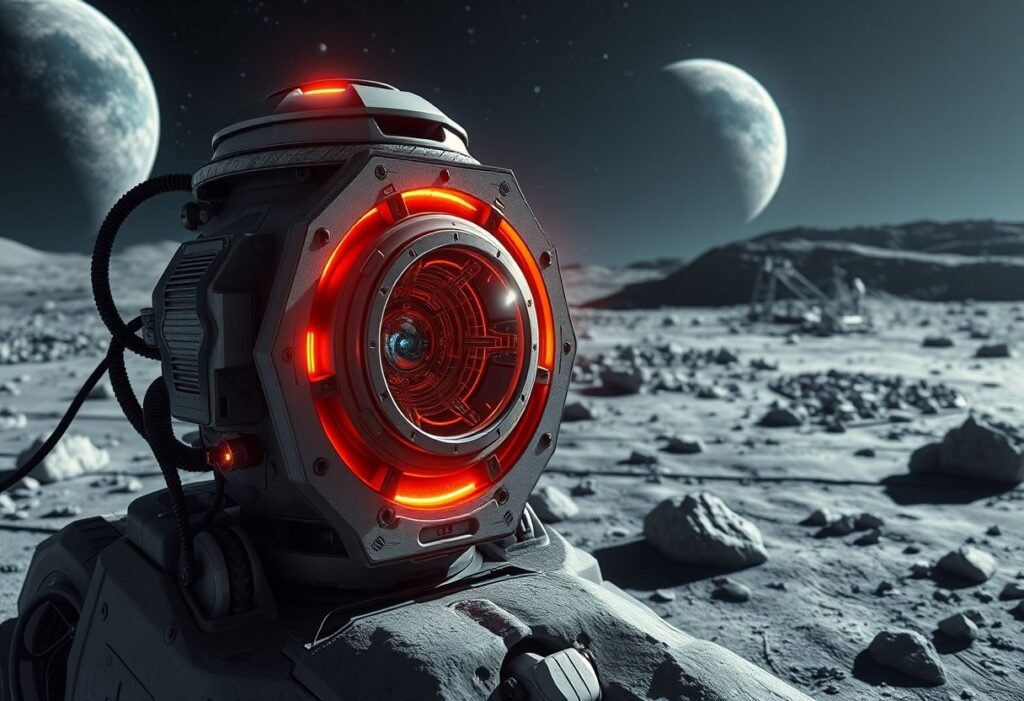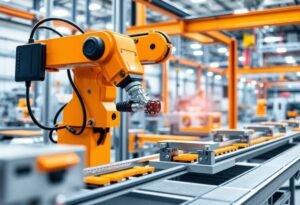The concept of utilizing robotic technology for construction on the Moon is gaining traction as we contemplate lunar living. The implementation of a wall-building robot brings a promising solution that could significantly enhance our future presence on the Moon.
Innovative Robotic Solutions for Lunar Construction
As humanity aims to establish a sustainable presence on the Moon, innovative robotic solutions are essential. A wall-building robot designed to create protective structures will play a crucial role in safeguarding lunar bases. Its autonomous capabilities will enable it to perform tasks without constant human oversight, potentially operating in harsh lunar conditions. This technological advancement is vital for ensuring the safety of astronauts and equipment, providing a reliable barrier against debris and other space hazards. Moreover, this robotic approach exemplifies a significant evolution in construction methods, paving the way for more complex structures on extraterrestrial surfaces.
The Significance of Protecting Lunar Environments
When considering life on the Moon, protection from environmental factors is paramount. The Moon’s surface is exposed to intense radiation, temperature fluctuations, and micrometeoroid impacts. Therefore, constructing robust walls is critical for long-term habitation. These walls not only protect from external threats but also help regulate internal conditions, creating a more viable living environment for astronauts. By harnessing robotic technology to address these challenges, we can ensure that the structures we build will withstand the extremes of lunar conditions, thereby enhancing the prospects for future lunar missions and habitation.
From Concept to Reality: Developing Advanced Robotics
The development of advanced robotics is steadily moving from concept phase to practical application. Research institutions, like ETH Zurich, are pioneering initiatives that merge robotics with construction techniques. These entities focus on designing robots that can navigate the Moon’s rugged terrain, perform necessary construction tasks, and operate efficiently. This transition is critical in bringing lunar construction projects closer to reality, as the collaboration between robotic technology and architectural planning will ultimately lead to successful missions and lunar bases.
The Role of Autonomous Rovers in Lunar Development
Autonomous rovers equipped with sophisticated construction capabilities are envisioned as instrumental in developing lunar infrastructures. Their ability to work independently in a remote environment showcases the potential for robotic systems to take on challenging construction tasks. These rovers will not only be responsible for building but also for maintaining the facilities, ensuring that they are always prepared for human arrival and daily operations. This multi-functional approach enhances efficiency and reduces reliance on human labor, which is essential in the Moon’s unforgiving landscape.
Challenges and Future Directions in Robotic Construction
While the future of robotic construction on the Moon holds immense promise, it also presents several challenges. Ensuring that robots can operate effectively in the low-gravity environment while overcoming potential technical failures is paramount. Additionally, developing structures that provide adequate thermal insulation and radiation protection requires innovative design solutions. As research and technology evolve, these challenges will be addressed, refining robotic systems that can successfully construct and maintain lunar habitats.
Paving the Way for Interplanetary Exploration
Ultimately, the advancements in wall-building robots are not just limited to lunar construction but reflect a broader goal of interplanetary exploration. In establishing a human presence on the Moon, we are laying the groundwork for future missions to Mars and beyond. The lessons learned from developing autonomous construction technologies will translate into strategies for building habitats on other celestial bodies, enhancing our ability to explore and utilize the solar system more effectively.
Disclaimer: This article is for informational purposes only and does not constitute expert advice or recommendations in the field of space exploration.





















